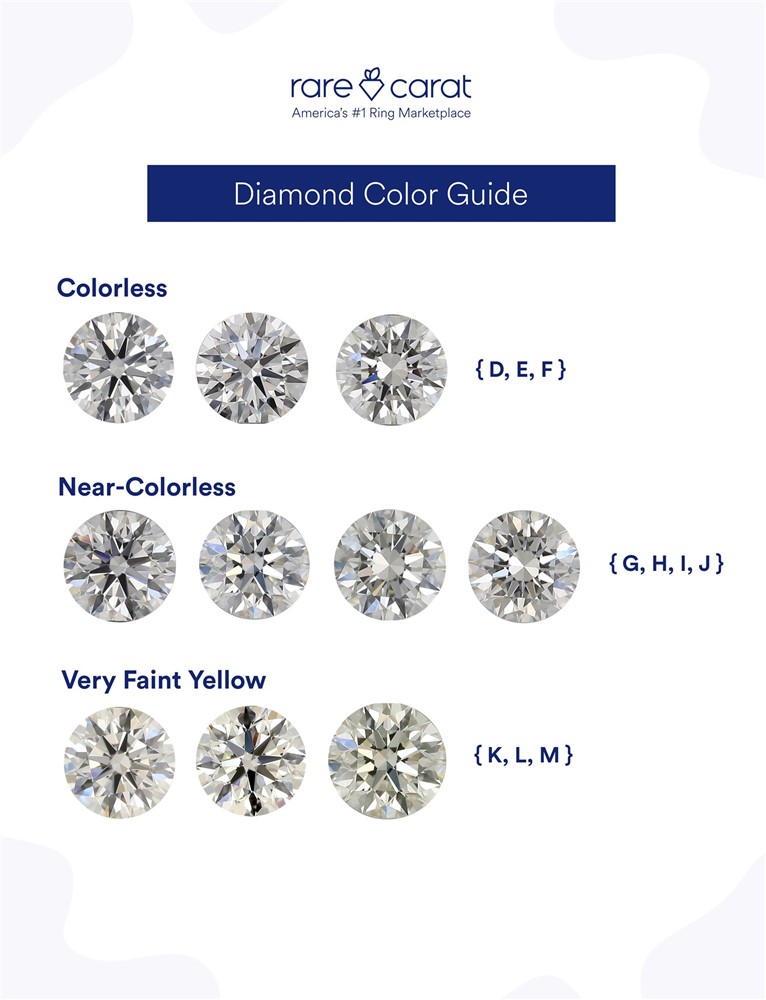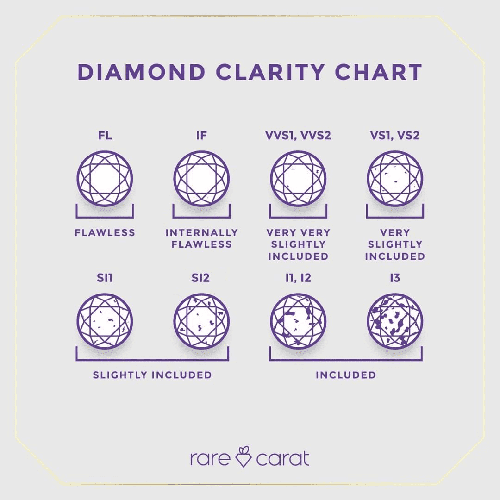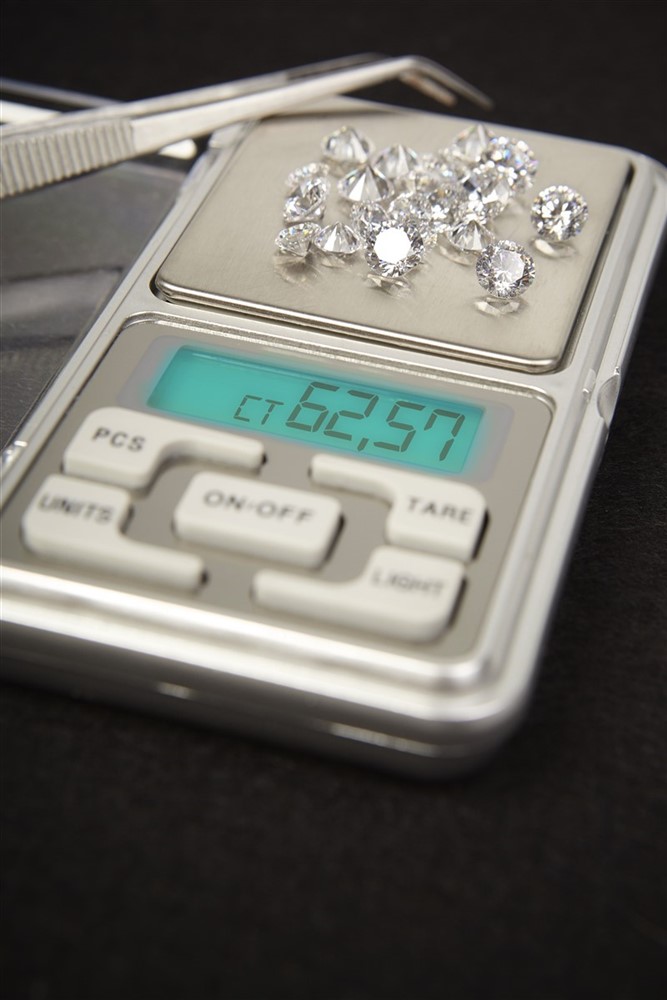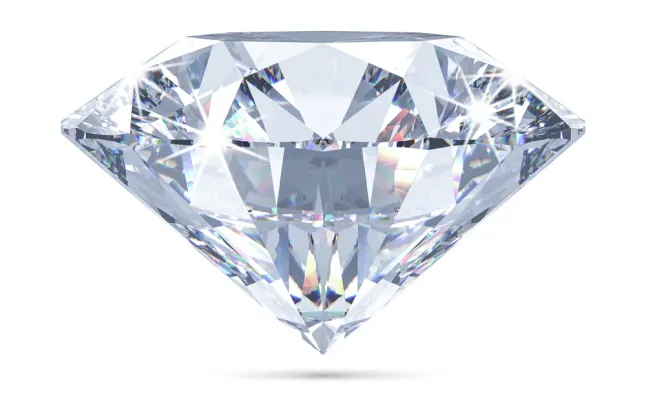- Cut determines sparkle quality (excellent to poor cut = brilliant to dull-looking)
- Color: D (colorless) to Z (tinted); G-J = best value
- Clarity: flawless to included - VS/SI often provide eye-clean stones at lower costs
- Carat = weight; prices spike at full-carat sizes (1ct, 1.5ct)
- Balance all 4Cs - cut matters most, then optimize others
The most basic but fundamental knowledge you could have about diamonds would be the 4C’s: cut, color, clarity, and carat weight. These parameters are how we measure the quality of the diamond, and the quality of a diamond directly influences the price of the stone. It’s like knowing the specific attributes of why a good whiskey is good, or what exactly makes a car a collectible when there are millions of cars in the world. Plus, it’s just good practice to be an informed consumer, especially when high-value items are involved! As your diamond guru, I’ll explain everything you need to know about the 4 C’s so that every diamond purchase you make in life will be a dazzling one!
Cut

What is the first thing you notice when looking at any diamond? Why the sparkles of course! The natural, raw diamond has to be cut into these brilliant stones we are familiar with… and that is exactly what the cut grade is - how well the rough diamond was cut into a finished diamond.
Our cut grade can range from excellent to poor, and poorly cut diamonds are not awesome. If the proportions are off, if the gem is cut too deep or too shallow, or if crucial cuts are missing, the diamond can look dark, hazy, asymmetrical, or have weird looking optical shadows inside of it. Plus, without the proper angles, light can’t interact with the diamond the way it’s supposed to. This is important because that is how a diamond sparkles- light goes in, bounces around, then reflects back at you in that dazzling brilliance diamonds are known for.
Color

One of my favorite things about diamonds is that they can come in almost any color; with fancy colors like reds, pinks, and blues being easily the most valuable. Fancy colored diamonds are in a world of their own though, so for us - it is the colorless diamond grading scale we are interested in. These diamonds range from colorless to strongly yellow or brown tinted, or from D-Z.
Most diamonds have some kind of coloring to them, even if it’s subtle, which is why true colorless diamonds are rare and expensive. With that said, most people can’t detect the color in diamonds until around the K grade, which means anything above that should appear colorless and will be a little more budget friendly for you. But also, don’t be afraid of going for a noticeably tinted diamond if you think you might enjoy something a little different!
Clarity

The clarity grade of a diamond is a heavy hitter when it comes to the pricing of the stone. We used to hear a lot in gem school that Mother Nature cooks in a dirty kitchen… which basically means a flawless diamond is extremely rare, as is an internally flawless diamond. And this is where our clarity grading scale beings…
Flawless and internally flawless diamonds are literally just that - perfect little pieces of condensed carbon with absolutely nothing trapped inside. Very impressive, very uncommon, and very expensive (especially as the diamond gets larger!).
VVS1 and VVS2 grades are very very slightly included diamonds. The size of the inclusions in these stones are so minute that even under a microscope, it is still hard to see them. This is an excellent clarity for a diamond, and anyone should feel lucky to have such a high quality gem.
VS1 and VS2, very slightly included diamonds, also have very small inclusions that are only visible under magnification. This is important because it means the diamonds are eye clean - and that is almost always the priority when picking a diamond!
SI1 and SI2 are slightly included stones, and this is where the best value is to be found. Some SI1 diamonds are eye clean, and some are not- but those that are will be the sweet spot! An eye clean diamond with an SI price tag is a big win! Just look at the diamond, slowly and carefully, and if you don’t see anything super obvious then it is perfect.
I1, I2, and I3 grades are included diamonds. These stones are the lowest clarity grade and will have obvious inclusions, fractures, or maybe both. They aren’t ideal, mostly because the durability might be questionable at the I2 and I3 range, but I’m a firm believer in loving all diamonds- no matter their clarity grade.
Carat Weight

The carat is how we can consistently measure the weight of any gemstone, anywhere in the world (which is extremely convenient). For diamonds specifically, the larger it is, the rarer it is, and the more expensive it will be. Most diamonds sold in the US are right around 1 carat, but of course, the perfect size is whatever you think it should be (go big!).
My carat weight tip for you would be to consider diamonds that are right under a key weight - so for instance a .98 ct diamond instead of a 1 ct, or a 1.48 ct instead of a 1.50 ct stone. These diamonds will still look the same in size but will be noticeably friendlier to the budget.
Mostly above all though, I always recommend looking at images and videos of your diamond before purchasing it; look to see if it is eye clean, if you observe any yellow or brown coloring, and make sure it sparkles back at you like you think it should. As long as you do that, and you approve of what you see, then your diamond is absolutely perfect for whatever life holds. May all your future diamond buying adventures be bright and sparkly! If you have questions, remember you can always reach out to one of our gemologists by using the chat button over in the right corner of this page. Happy diamond shopping!

